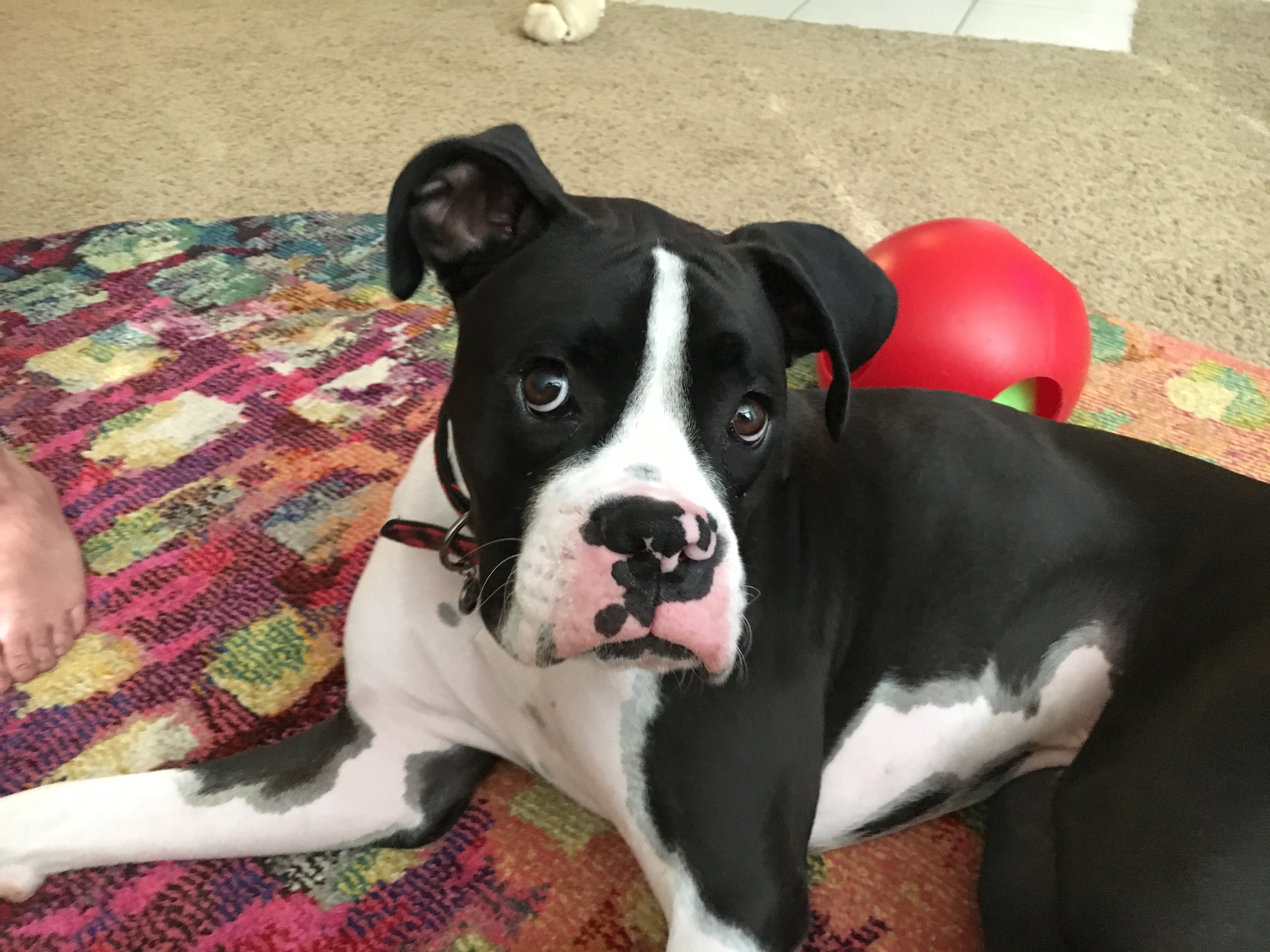How to Help a Boxer Get Over a Case of Separation Anxiety
By: David Codr
Published Date: June 22, 2017
By David Codr
Ryker is a one-year-old Boxer who lives in Omaha. His guardian set up a dog behavior training session to address his possible separation anxiety and the triggers that get him worked up when his guardian prepares to leave the house.
Boxers usually have big personalities and a get in your face way of greeting you so I was caught a little off guard when Ryker kept his distance and remained so far away to start the session.
Once he got a chance to give me a good sniff, Ryker’s body language relaxed quite a bit and he adopted a playful – bouncy greeting and energy.
I sat down with his guardian and her sister and chatted about Ryker’s problems; chief among them were his anxiety with the kennel and a case of Separation Anxiety.
After suggesting some changes that will help Ryker feel more confident in the leadership of his guardian, I was ready to address his fear of the kennel with some basic kennel training.
Many people fail to even consider that they may need to help their dog practice being inside the kennel. But its a confined space and for some dogs, the kennel becomes associated with the human leaving as that is the only time the dog is asked to go into the kennel.
By practicing having Ryker in the kennel for progressively longer periods of time while she is home and the door is open, his guardian can help him learn the crate is a safe place to relax in. I want a dog to think of the kennel as their own room. A location they seek out when overwhelmed or need to get away. This kind of positive dog training goes a long way when crate training a dog.
Next up was Ryker’s Separation Anxiety. Any good dog behaviorist will tell you this is pretty much a panic attack for dogs. In many cases, this starts long before the human actually puts the dog into the kennel or leaves the home. We call these triggers and identifying them is an important element to identify when treating a dog who suffers from Separation Anxiety.
I handed my camera over to his guardian so I could go over an exercise to help her learn how to desensitize Ryker to these triggers. You can watch this dog training exercise in the video below.
Desensitizing a dog is a very effective way to help it using positive dog training, however it requires a lot of repetition. Ideally in short 1-2 minute practice sessions between naps the dog takes.
I also recommended the guardian start training Ryker to stay using the three D’s; duration, distance then distraction. Once Ryker has these down, his guardian can put him into a stay and go get a drink of water, use the bathroom, etc.
As Ryker develops his stay skill-set, his guardian can use it to help him practice being alone in another room, while she is still in the house. This requires the dog to develop more self control and is a great way to practice some basic dog training while also boosting Ryker’s confidence when he cannot directly see him human.
We wrapped up the session by going over Ryker’s Roadmap to Success. You can check it out and get some free dog training tips by watching the video below.
Categorized in: Dog Behavior


